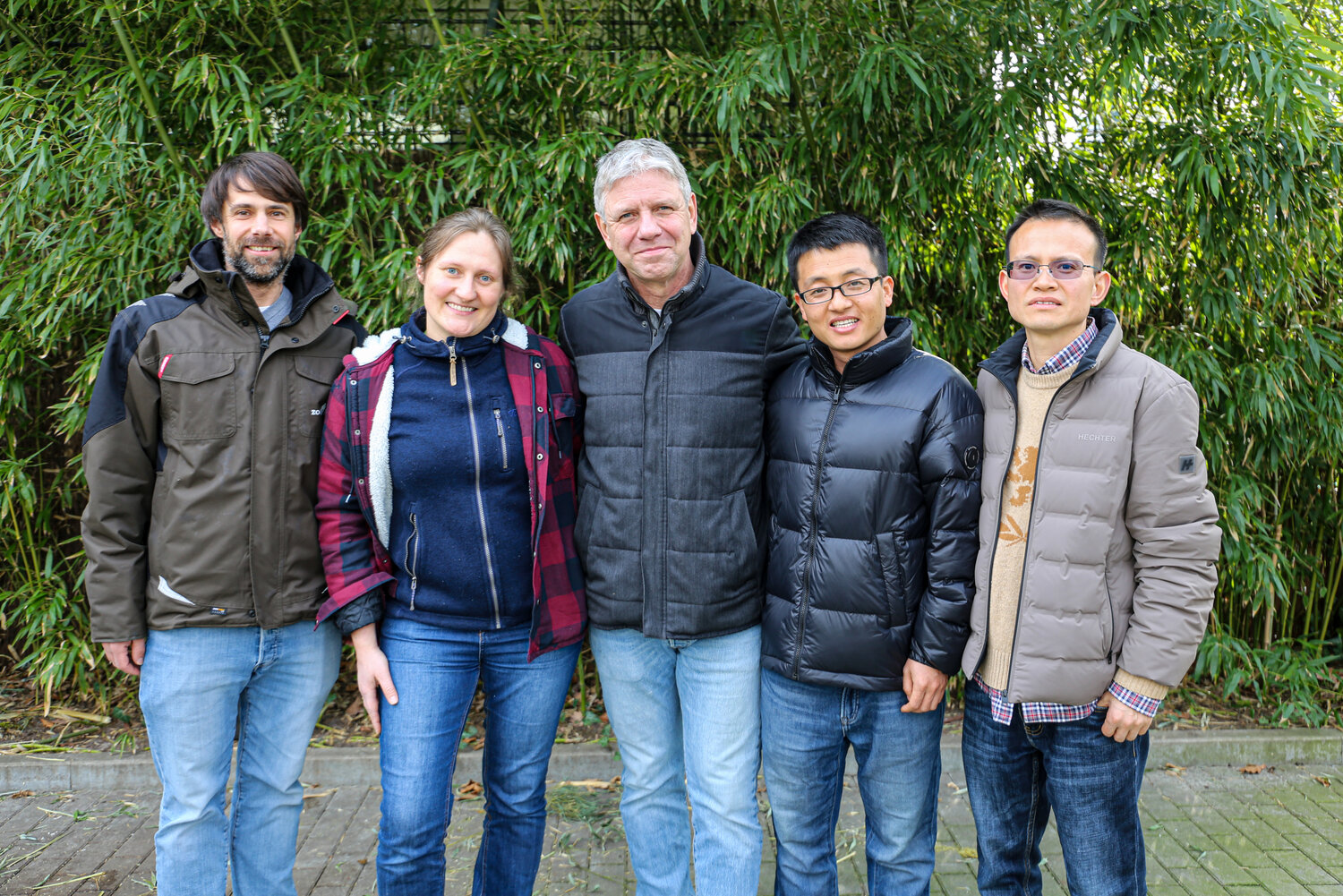The giant panda is the most widely recognised symbol of wildlife conservation. Despite extensive efforts to protect them, there are currently only an estimated 1,860 of the remarkable bears living in their natural range in the mountain forests of China. The giant panda is therefore classified as “Vulnerable” on the IUCN Red List of Threatened Species. After the first cubs were born at Zoo Berlin to Germany’s only panda pair in 2019, an international team of experts has now arrived in the German capital to once again assist with breeding efforts.
It is not only the lifestyle and diet of these bamboo-eating bears that are quite particular – giant pandas also exhibit unique reproductive behaviour. These strictly solitary animals have a very short window of opportunity to reproduce, with panda females only fertile for 24 to 72 hours each year.
That short fertile window is now imminent for Zoo Berlin’s female panda Meng Meng. This is partly evident in her behaviour, for example in the loud squeaking noises she is emitting, and in her hormone levels. “We measure the hormones in Meng Meng’s urine at regular intervals, paying particular attention to changes in her progesterone and oestrogen,” explains wildlife endocrinologist Dr Jella Wauters from the Leibniz Institute for Zoo and Wildlife Research, who forms part of the team of experts.“These tests allow us to predict fairly accurately when the best time is to bring the two pandas together for possible mating,” she adds. For this crucial phase, two experienced panda experts from China have travelled to the Zoo to assist their Berlin colleagues in an advisory capacity. “If natural reproduction does not look likely, we will consider artificial insemination, which would be carried out with the help of our colleagues from the Chengdu panda base,” reports Prof. Thomas Hildebrandt, who heads the Department of Reproduction Management at the Leibniz Institute for Zoo and Wildlife Research and also serves as a scientific advisor to the Chengdu Research Base of Giant Panda Breeding.
“We are thankful to have such a competent team of experts with us here in Berlin,” says Zoo and Tierpark Director Dr Andreas Knieriem. “As ambassadors for species conservation, our pandas are particularly close to our hearts, and we are keeping our fingers crossed that we will be able to welcome more panda cubs in Berlin this year. Even though we have created the best possible conditions, there is never any guarantee of success with a special undertaking like this.”
Zoo Berlin has been home to Germany’s only giant pandas since the summer of 2017. To keep the bears, the Zoo pays an annual fee that is channelled into species conservation efforts in China. This sum is used to fund research into reproductive biology, conservation measures like reforesting and connecting up individual protected areas, and the reintroduction into the wild of individual pandas.
180 years of Zoo Berlin – tradition meets modernity
Zoo Berlin was founded in 1844, making it the oldest zoo in Germany. Located in the heart of the city, the non-profit zoological institution is not only one of Berlin’s most popular attractions, with 3.7 million visitors per year, it also has its own species conservation programme. The Berlin World Wild programme is worth around €2 million and supports initiatives and projects all over the world – including polar bear research in the Arctic, the reintroduction of European bison in the Caucasus, and vulture research in southern Africa.
